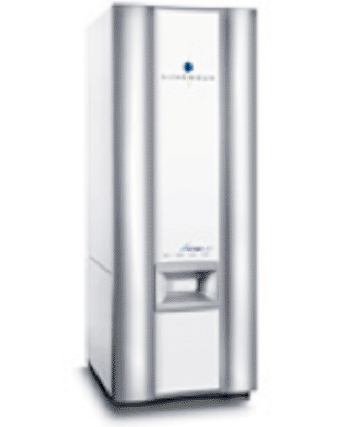FDA Clears System Enabling Identification of Nearly 200 Pathogenic Microbes, Reduces Time to Identification
By LabMedica International staff writers
Posted on 03 Sep 2013
A mass spectrometry system for automated identification of bacteria and yeasts, covering the vast majority of microbial infections currently afflicting humans, has now been cleared for clinical use in the USA. Posted on 03 Sep 2013
The US Food and Drug Administration (FDA; Silver Spring, MD, USA) has granted its 510(k) de novo clearance for the “VITEK MS” system produced by bioMérieux, Inc. (Marcy L’Etoile, France) at bioMérieux USA (Durham, NC, USA). The system provides simple, rapid identification of multiple—currently up to 193—pathogenic microorganisms in a single automated testing series. It can identify yeasts such as those from the Candida, Cryptococcus, and Malassezia groups, and bacteria such as those from the Staphylococcaceae, Streptococcaceae, Enterobacteriaceae, Pseudomonadaceae, and Bacteroidaceae groups.

Image: bioMerieux’s “VIVEK MS” system for identification of pathogenic microbes (Photo courtesy of bioMerieux).
“The ability for laboratories to use one device to identify almost 200 different microorganisms is a significant advance in the timely identification of pathogenic microorganisms,” said Alberto Gutierrez, PhD and director of the Office of In Vitro Diagnostics and Radiological Health at FDA’s Center for Devices and Radiological Health. Compared to identification methods requiring abundant microorganism growth cultured from patient samples, this system requires only a small amount, such that testing can begin as soon as growth is visible, generally within 18-24 hours; traditional methods can take up to five days.
The FDA reviewed the VITEK MS through its de novo classification process. Its decision was based on results of a multicenter study of 7,068 clinical isolates covering the most important categories of microbial pathogens. Compared to sequencing and biochemical testing, VITEK MS correctly identified the group or family 93.6% of the time, and 87.5% to species level. It gave a “no identification” result for 3.2% of the microorganisms. Of all test results, only 0.8% was incorrect and 2.4% were low discrimination with no correct result.
In another study, separate from the FDA petition, a team from the Washington University School of Medicine tested VITEK MS by analyzing a 10-year collection of clinical samples initially difficult to identify. “We pulled these samples from the freezer and the answer was very exciting. Nearly all of the isolates were able to be identified with high accuracy in a matter of moments using a single method: MALDI-TOF MS,” said Dr. Carey-Ann Burnham, assistant professor of Pathology and Immunology at WUSM and medical director of Microbiology at Barnes Jewish Hospital.
The VITEK MS is based on state-of-the-art MALDI-TOF mass spectrometry technology. This, along with a proprietary algorithm that further increases accuracy, enables identification by comparing high-resolution spectra data to a database library owned by bioMérieux. Sample preparation is simple and quick—no DNA extraction or purification—a very small amount of microorganism is placed onto a target slide, a ready-to-use matrix solution added, the slide inserted, and identification results are then displayed within minutes. A unique preparation station provides flexibility that allows multiple users to work in parallel for high-throughput capability. bioMérieux also offers integrated workflow solutions with “VITEK 2”, providing connectivity between microbe identification with VITEK MS and antibiotic susceptibility testing with VITEK 2.
VITEK MS is indicated for use in conjunction with other clinical and laboratory findings to aid in the diagnosis of infections.
Related Links:
US Food and Drug Administration
bioMérieux













